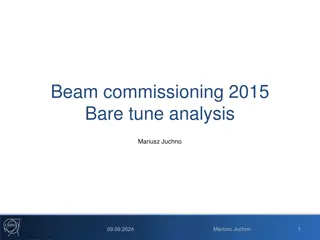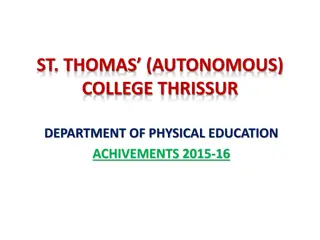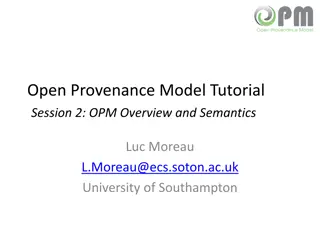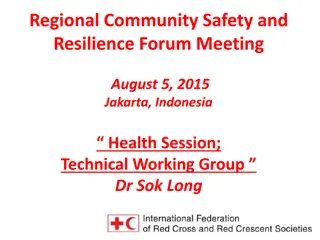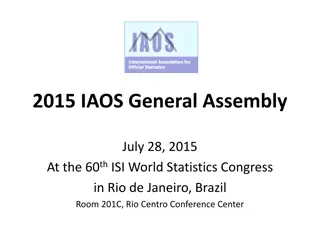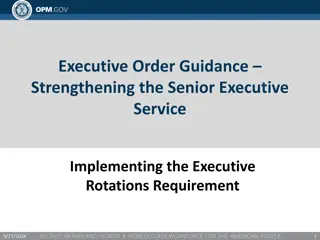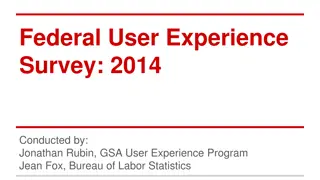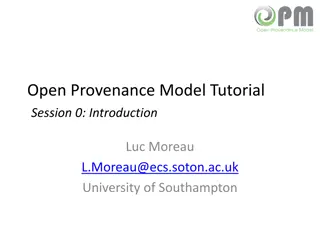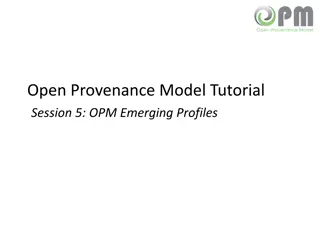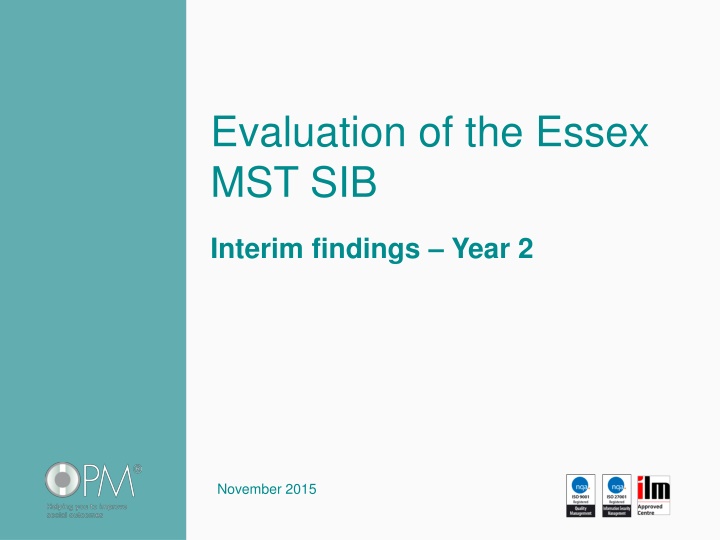
Essex MST SIB Evaluation Interim Findings Year 2 November 2015
"Explore the impact of the Essex MST SIB structure, stakeholder reflections, and economic assessment. Recommendations for future improvements and methodology details presented in the report."
Download Presentation

Please find below an Image/Link to download the presentation.
The content on the website is provided AS IS for your information and personal use only. It may not be sold, licensed, or shared on other websites without obtaining consent from the author. If you encounter any issues during the download, it is possible that the publisher has removed the file from their server.
You are allowed to download the files provided on this website for personal or commercial use, subject to the condition that they are used lawfully. All files are the property of their respective owners.
The content on the website is provided AS IS for your information and personal use only. It may not be sold, licensed, or shared on other websites without obtaining consent from the author.
E N D
Presentation Transcript
Evaluation of the Essex MST SIB Interim findings Year 2 November 2015
CONTENTS 1. Overview of our brief 2. Methodology 3. Headline emerging findings: a. Impact of the SIB b. Stakeholder reflections on the SIB c. Economic assessment 4. Recommendations
RECAP OF OUR BRIEF Capture evidence of, and explore the extent to which: 1) The SIB structure impacts on the implementation of MST. 2) Delivery of MST through the SIB payment by results mechanism adds any further significant value in terms of outcomes or performance. Focus on the SIB, not MST as an intervention. Formative, summative and economic assessment. Internal and external audiences. Complete by March 2016.
Our methodology Interim report informed by: Quantitative Qualitative Sharing learning -Interviews with programme stakeholders -Survey -Other MST area interviews -MST Inc. benchmarking Evaluation Steering Group International practice share group Annual learning for the future workshops Stakeholder interviews Stakeholder survey Literature & evidence review Outcomes data Economic assessment A replicable method for capturing any value added by the SIB Recommendations for improving the delivery of MST through the SIB Recommendations for improved future working of SIBs
Findings are still emerging. Many outcomes are likely to take many months, if not years, to realise. SOME IMPORTANT POINTS TO NOTE It has not been deemed appropriate at this stage to consider detailed outcomes data regarding the Essex MST service. However, high level data shows, at end of Year 2, 101 cases closed with more than 80% young people remaining safely at home. The Essex SIB reflects the trials and tribulations often association with new and innovative way of doing things. The EA focuses on the SIB model in Essex, and is not meant to imply that similar costs will always be involved in SIBs. The EA does not attempt to assess whether the contract overall was good value. The EA focuses on identifying, understanding and monetising specific activities that have been undertaken by the partners. It is not possible to conduct a robust quantitative comparison of the outcomes of the Essex SIB with other SIBs or MST
IMPACT OF THE SIB Referral processes: Impact on systems and processes: Introduction of the Therapist in Waiting. Research Assistant. Performance Analyst. Larger Flexible Fund. Evolution Fund. Referral rates increased overall in the last year, but still variable. Now at the cumulative number expected. Focus on developing solutions and removing barriers; ongoing scrutiny. Programme Manager focus on marketing MST. Clinical expertise expected to be critical. Monthly target of new cases taken on unique.
IMPACT OF THE SIB Referrals, utilisation and delivery processes On call allowance and London weighting. Therapist in waiting role: Cost effective so far, would implement in other MSTs. Requires coordination; impacts on staff morale. Therapist in waiting post impact curtailed cannot provide holiday cover.
IMPACT OF THE SIB Governance and management Performing well; roles well defined, stabilised relationships. SIB drives commitment. MST rigidity: 6 cases each, eligibility criteria. However, SIB thought to incentivise timing of cases to meet targets. Potential to scale up the model Economies of scale if working with neighbouring areas? Now greater understanding of eligibility criteria and alignment with DBIT.
IMPACT OF THE SIB ON OUTCOMES Flexible Fund is highly valued by therapists, rapidly removes barriers. [The Flexible Fund] loads the dice for success. That small amount of money may help to keep people at home. Thought to help with family engagement. Flexible Fund more accessible than other similar ECC funds. Alters family expectations?
IMPACT OF THE SIB ON OUTCOMES Data collection largely business as usual now. Mid-point panel review to flag additional needs or challenges (not specifically SIB-driven). SIB higher scrutiny = reduced error. RA role in monitoring: 30 months data collection. Risk of adverse reaction by families? Stakeholders generally positive about the data quality, rigour of analysis, utility of the dashboard. SIB supports sustained focus on outcomes: SIB-funded Welfare Call. Renewed focus on improving the data returns from SDQs. But - ECC strong performance management culture: perceived to be less value added.
IMPACT OF THE SIB ON OUTCOMES MST Inc. benchmarking: Exceeded majority of target and national average scores. Strong on proportion of YP living at home, case closure and proportion with no new arrests. Below benchmark in % of YP in school / employment, overall adherence scores and average no. of cases per therapist. Outcomes for families Avoiding days in care for participants. ECC spending more on SIB payments at this stage than planned for nervousness re LA funding cuts, despite overall cap. While actual number of 11-17 yr old LAC has reduced, they represent higher proportion of overall LAC population meeting system needs?
COMPARISON WITH OTHER MST AREAS Hard to compare the performance of the Essex service to others (sizes, contexts etc). SIB offers contractual longevity to the service not common elsewhere. This provides the space to innovate and take risks (within the constraints of MST) to evolve into the highest performing service it can be. Survey respondents: Essex MST service slightly more effective than other MST services. Cannot firmly conclude whether the SIB impacts on outcomes. But it is reported to help indirectly.
ECONOMIC ASSESSMENT Scope of the assessment What additional costs have been incurred by the project partners as a result of the Essex MST being commissioned by through a SIB, versus being commissioned directly by ECC? The additional costs incurred during theMST delivery phase (May 2013 onwards). No direct comparisons. Hypothetical comparison conducted = subjective viewpoints, based on experience. Other MST sites were interviewed. But - local context impacts.
SUMMARY OF ADDITIONAL COSTS Some additional costs have been incurred because the SIB was innovative: unlikely to be incurred to same extent elsewhere. Assumes that all CSSL/SF activities are additional (unless transferred from commissioner). Some additional costs are directly adding value to the MST: e.g. funding new posts. Additional costs incurred over & above the SIB: Governance. PM. PbyR processes arising from the SIB. Others indirectly add value; some not perceived to add value. While additional costs have been incurred, partners confident they are positioning themselves well for future involvement in social investment projects.
GOVERNANCE AND PM ADDITIONAL COSTS IDENTIFIED Governance within a typical non-SIB project commissioned directly by ECC would include a monthly performance review meeting between the ECC and the provider. ECC has incurred costs over and above the SIB expected costs. In Essex: more meetings, more senior input. The meetings incurring the most resources are the board meetings and contract management meetings. Other MST sites have short weekly commissioner/provider meetings to ensure no hold-ups are encountered. Some of the additional costs reduce over time, in line with expectations but small impact.
UNDERSTANDING THE ADDITIONAL COSTS More rigorous governance arrangements than in other services / MSTs: Robust structure of the SIB. Failure to meet agreed targets not seen as an option. Need to ensure investor returns. Less acceptance of low initial referral rates; more pressure earlier to increase referrals than reported elsewhere. MST rigidity prevents full innovation in every aspect; leads to CSSL closer management of processes than is typical. Intermediary, changed relationships and duplication. More detailed information being analysed and scrutinised.
THE VALUE ADDED BY ADDITIONAL GOVERNANCE AND PM Reduced risk of under-performance; mitigating actions quickly identified and implemented; increased ability to measure impact. Clarified referral pathway as early as possible: facilitated smoother running of MST service moving forward: Greater involvement of MST supervisors in quadrant panels, engaging with social workers and improving the partnership with D-BIT, to ensure more effective referrals. Costs covered by the SIB. In a fixed sum contract these activities would have been funded by the provider, either at cost to them, or by reducing other supervisor activity.
ADDITIONAL PBR COSTS AND VALUE ADDED Value created Reduced financial risk for partners (but ECC s financial risk extends beyond days in care role in managing the system as a whole, and the SIB is one subset of that). Focus on outcomes; other MSTs have had under-delivery. Enabled knowledge transfer to AfC; capacity building the VCS. Costs for all parties Collecting and reporting data, and agreeing the payments. Highly complex; extra work. SIB requires more data analysis than other PbRs. Validation and duplication. These costs are likely to reduce in future, with streamlined processes.
PROJECT MANAGEMENT ADDITIONAL COSTS Additional PM activities fall on both CSSL and ECC. The costs for CSSL are expected; their role as SIB manager is a known additional cost within the SIB model. CSSL costs are reducing each year; expected to continue. Costs incurred by ECC are roughly equivalent to costs incurred by CSSL. ECC are incurring costs to manage their involvement in SIB and the complexity that involves this is not reduced by CSSL s role. But would always require ECC due diligence.
RECOMMENDATIONS 1 OF 3 Recommendations for the Essex MST SIB Recommendations for others seeking to develop a SIB 1: Closer communication between the CSSL Board and ECC/AfC. Improved (and more direct) communications between AfC and ECC may help to instil a sense of shared purpose. 3: Consider the context in which the intervention will be implemented, and the primary outcomes being sought. Evidence does not simply mean evidence on outcomes or effect size. It is vital to look at other types of evidence (in addition to outcomes) in relation to what effective implementation in specific contexts looks like. 2: Continue the transparency already shown, and share data and learning more openly. The Essex MST SIB has involved open dialogue between partners, and we encourage this to be sustained (and replicated in other SIBs).
RECOMMENDATIONS 2 OF 3 4: Any assumptions about savings made from a SIB need to consider the system in its entirety. 6: Consider any potential differences of culture, expectations or approach, and seek to mitigate the impact of this. Some form of facilitated stakeholder engagement activities at the outset may be useful. 5: Carefully consider Programme Board membership. We recommend that others developing SIBs carefully consider the skill set needed, and how to most effectively maximise the value of bringing together private, public and VCS insights and expertise. 7: Avoid over-complicating the payment mechanism. This is likely to rely on good quality independent advice and support. We suggest that others would also benefit from a level of trust being established between the partners prior to the finer details of the contract being developed. It is key to strike a balance between simplicity and accuracy, making the payment mechanism as pragmatic as possible.
RECOMMENDATIONS 3 OF 3 8: Consider introducing a payment mechanism with a longer lead in time. This will allow time for the upfront marketing , awareness raising and relationship building required. 9: Plan out where data analysis and PM will take place, and resource this accordingly. We recommend that others plan out the levels of analysis and programme management expected, and clarify exactly who will provide what, to minimise the duplication required. 10: Consider any opportunities to realise economies of scale, but carefully consider context.
THANK YOU Contact us: Dr. Chih Hoong Sin, OPM csin@opm.co.uk 020 7239 7800 Lauren Roberts, OPM lroberts@opm.co.uk 07920 492222


